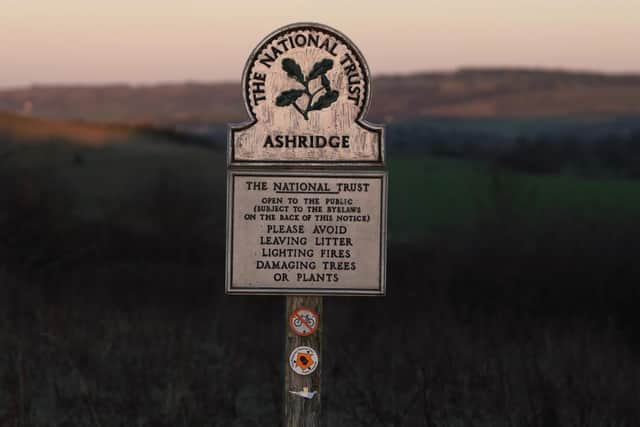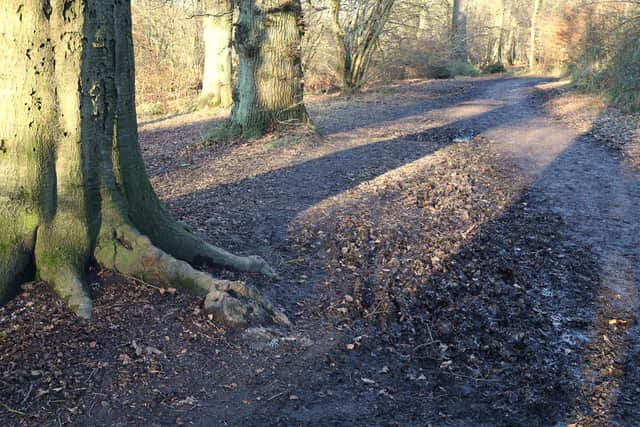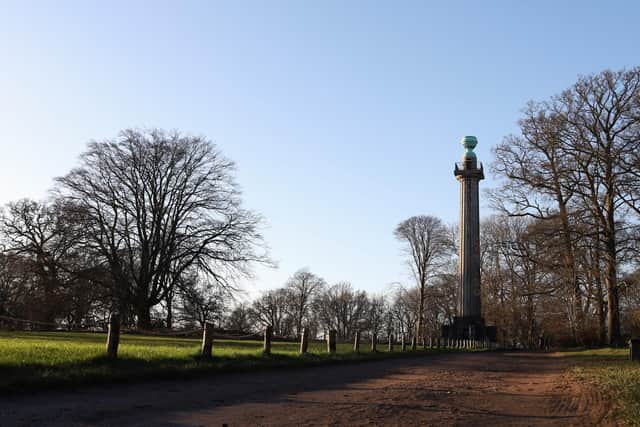Developers must make payment for Hemel park to protect real-life ‘enchanted forest’
and live on Freeview channel 276
Housebuilders must pay to upgrade Gadebridge Park to help protect a real-life “enchanted forest”.
Dacorum Borough Council is set to plough thousands of pounds into its parks to help “deflect” visitors away from Ashridge Estate near Berkhamsted.
Advertisement
Hide AdAdvertisement
Hide AdThe woodland in the Chiltern Hills is the National Trust’s largest ancient woodland.


It featured as the “enchanted forest” backdrop for Disney’s Maleficent starring Angelina Jolie.
At a meeting on Wednesday, February 28, the authority agreed developers should pay for upgrades at Gadebridge Park, Margaret Lloyd Park and Howe Grove in Hemel Hempstead as part of efforts to protect Ashridge Estate.
Housebuilders must already pay for upgrades at Bunkers Park in Hemel Hempstead and Chipperfield Common near Kings Langley.
Advertisement
Hide AdAdvertisement
Hide AdCouncillor Sheron Wilkie (LD, Tring Central) is responsible for “place” in Dacorum.


She has previously told the Local Democracy Reporting Service: “We are not trying to replace Ashridge – we wouldn’t want to.
“We certainly do not expect people to stop going to Ashridge.
“But we can’t carry on as we are.
“Instead, this is a strategy to deal with the issues that are happening with high visitor numbers and putting forward even more natural spaces as alternatives which are just as attractive or better.”
Advertisement
Hide AdAdvertisement
Hide Ad

Cllr Wilkie added: “The idea is that it’s not a prescription per se, but it will provide alternative spaces for dog walkers, people who want to have picnics, and people who want to enjoy open spaces.”
According to the existing rules, developers pay £4,251.71 per home towards suitable alternative greenspaces – or SANGs – near Ashridge.
“The collected funds are ringfenced for SANG purposes and are drawn down by services as needed,” a meeting report reads.
Any developments comprising 10 or more homes must be located within five kilometres (3.1 miles) of a SANG, or on the edge of the maximum 5km catchment area.
Advertisement
Hide AdAdvertisement
Hide AdDevelopers and charitable trusts can provide their own SANG in their plans.
Dacorum Borough Council hopes that cash for its parks and natural spaces will unlock 2,176 new homes in the borough – including 1,118 homes as a result of Gadebridge Park funding.
In addition to SANG provision, developers near Ashridge must pay £913.88 per new home for the Strategic Access Management and Monitoring Strategy interventions at the woodland.
The estate is in a special area of conservation, which is an internationally recognised area set aside to protect natural habitats, wild animals and plants.
Advertisement
Hide AdAdvertisement
Hide AdSome of the oaks at Ashridge are around 400 years old, a similar age to Hertfordshire’s Hatfield House and a similar age to London’s St Paul’s Cathedral.
Emily Smith, National Trust countryside manager at Ashridge, has previously said: “One of the really special features of an ancient woodland is actually the soil rather than the trees.
“A lot of the trees will have come and gone over 400 years, but what hasn’t changed is the soil where you’ve got a bank of rare and quite special flowers, fungi, invertebrates and microbes that you can’t find anywhere else apart from in a soil with tree cover for that length of time – or longer.”
Ms Smith said compacted soils harm trees if their roots cannot access the water, air and nutrients they need to survive.
Advertisement
Hide AdAdvertisement
Hide AdShe added: “We’ve always asked people to avoid stepping onto the bluebells in spring when they’re here to take their lovely photographs, but we’ve actually realised a lot of damage is being done in the winter when people are walking around the mud.
“They’re causing compaction of the soil and damaging bluebell bulbs in the winter.
“It’s quite evident in spring when we see those bulbs that have been freshly trampled struggling to survive.”